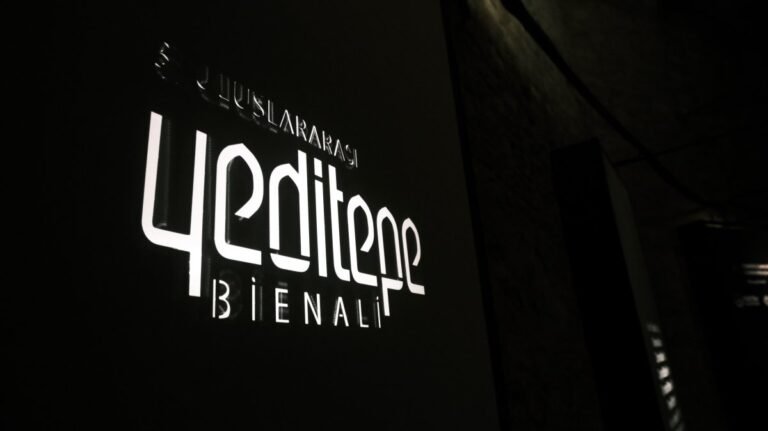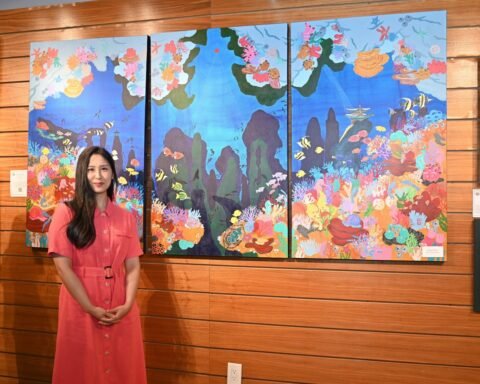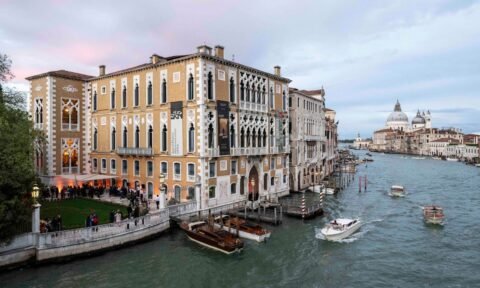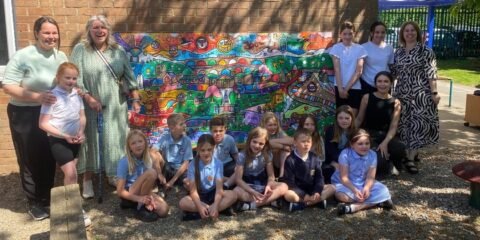Kicking off spectacularly, the 3rd International Yeditepe Biennale set the tone for a remarkable celebration of culture and art. Held under the auspices of the president of the Republic of Türkiye in cooperation with the Fatih Municipality and the Classical Turkish Arts Foundation, the opening ceremony took place at the historic Yedikule Hisar, one of Istanbul’s most historically rich sites. As modern takes on traditional Turkish arts took the front stage, this unique atmosphere provided an exceptional backdrop.
The event began with a speech by Muhammet Emin Demirkıran, head of the Classical Turkish Arts Foundation. His remarks focused on the theme of this year’s Biennale: “Where There Is Shadow, There Must Be Light.” He reflected on the deep connection between these two elements, explaining how they represent both the material and spiritual aspects of art. His opening captured exactly what was important about the night and highlighted how traditional Turkish arts – from calligraphy and miniature to marbling – continue to change while maintaining their core characteristics.
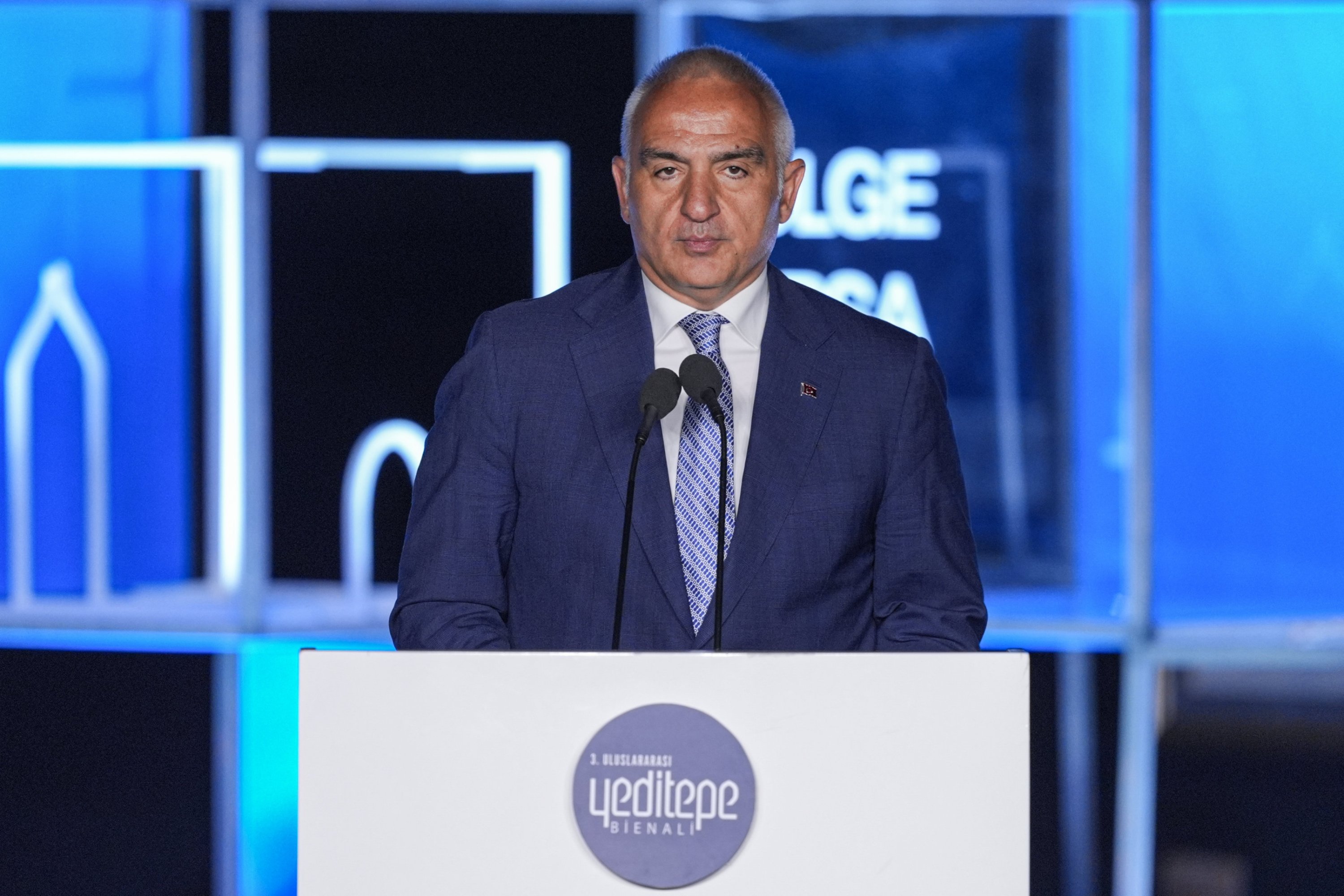
The speeches continued with important figures such as Mehmet Nuri Ersoy, minister of Culture and Tourism of Türkiye. Ersoy emphasized Türkiye’s commitment to supporting and promoting cultural and artistic projects by highlighting the Biennale’s significance. He praised the Biennale for providing a platform for the exchange of ideas and for uniting local and worldwide artists. His remarks underscored the government’s commitment to preserving Türkiye’s artistic heritage and supporting the creative expressions of modern artists.
Following Ersoy, Mehmet Ergün Turan, the mayor of Fatih, took to the stage. He discussed the cultural significance of the event for Istanbul, saying he was proud to host the Biennale in such a historically important district. He stressed the city’s crossroads of civilizations, where East meets West. Turam’s comments drew attention to the dedication of the local community to promote art and culture in the center of Istanbul, therefore ensuring the ongoing success and evolution of cultural projects.

The event culminated with a speech from President Recep Tayyip Erdoğan. He addressed the gathering with pride and passion, underscoring the importance of such events in promoting Turkish art and culture both nationally and internationally. His remarks reminded the crowd of the lasting legacy of Turkish art and the government’s part in supporting cultural projects, therefore striking a chord with them. Erdoğan’s speech was a call to action, urging further investment in the arts and culture sector and emphasizing the role of art in connecting nations and peoples across the globe.

The occasion, though, was not only about speeches. The exhibits themselves were spread across three carefully selected sites: Yedikule Fortress, the Sirkeci Train Station Warehouses, and the Nuruosmaniye Mosque. Walking through the Biennale felt like a journey through both time and space, as each site contributed its own unique atmosphere and history. The difference between the ancient buildings and the contemporary exhibits on display was clear-cut, almost as if the past and present were in continuous dialogue.
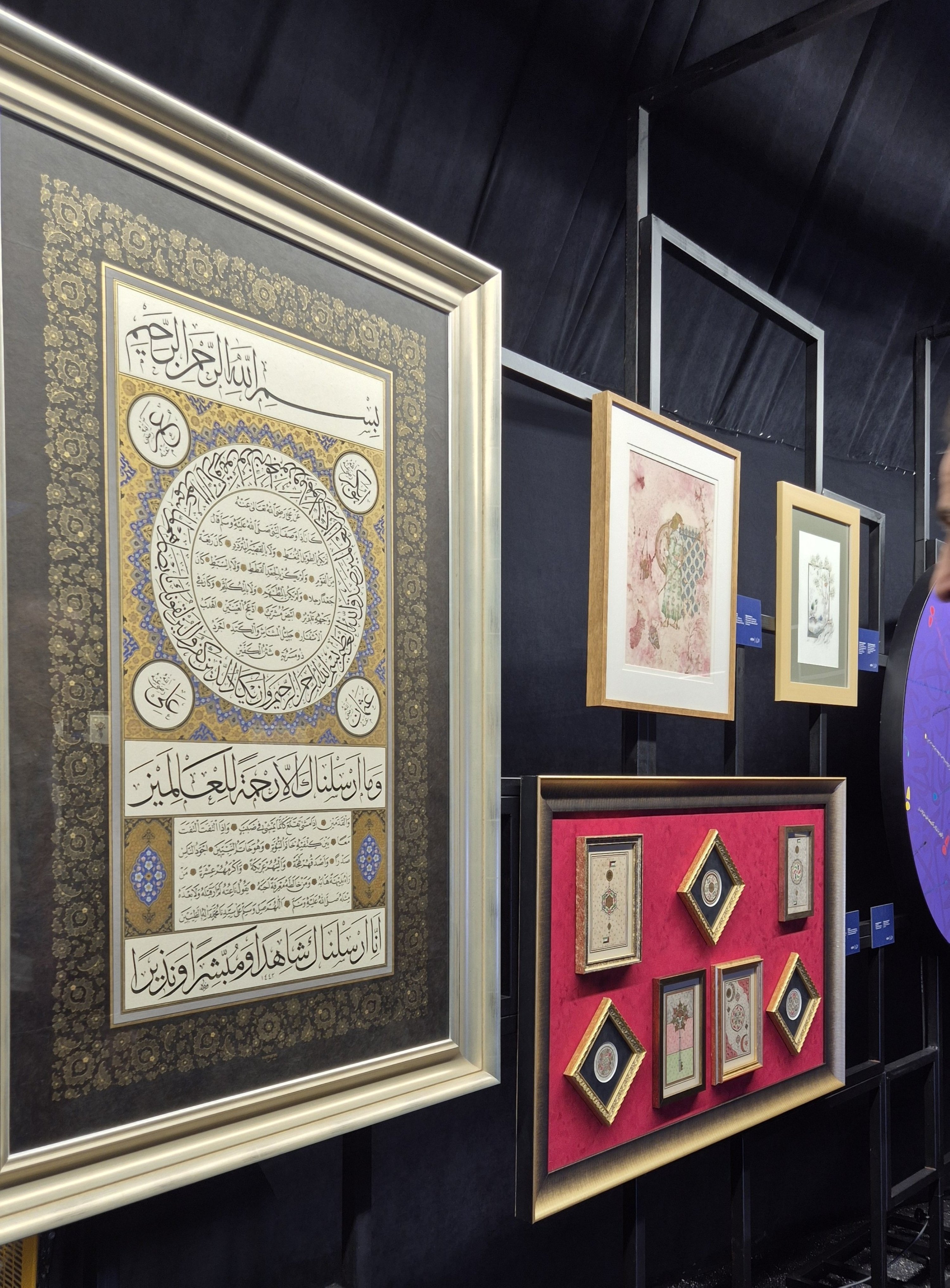
The president’s address, which both reflected on the success of the event and urged ongoing support for the arts in Türkiye, rounded off the gathering. His speech underlined how such cultural projects protect Türkiye’s impact in the modern world as well as preserve its rich artistic legacy. As he concluded his speech, it was clear that the event had achieved more than just showcasing art – it had created a space for cultural exchange and dialogue that transcended borders.
Reflecting on the event, I couldn’t help but consider how important the selection of sites was for the Biennale’s success. An event honoring the balance between tradition and modernity would be a perfect fit for Yedikule Hisar, with its historic walls and rich history.
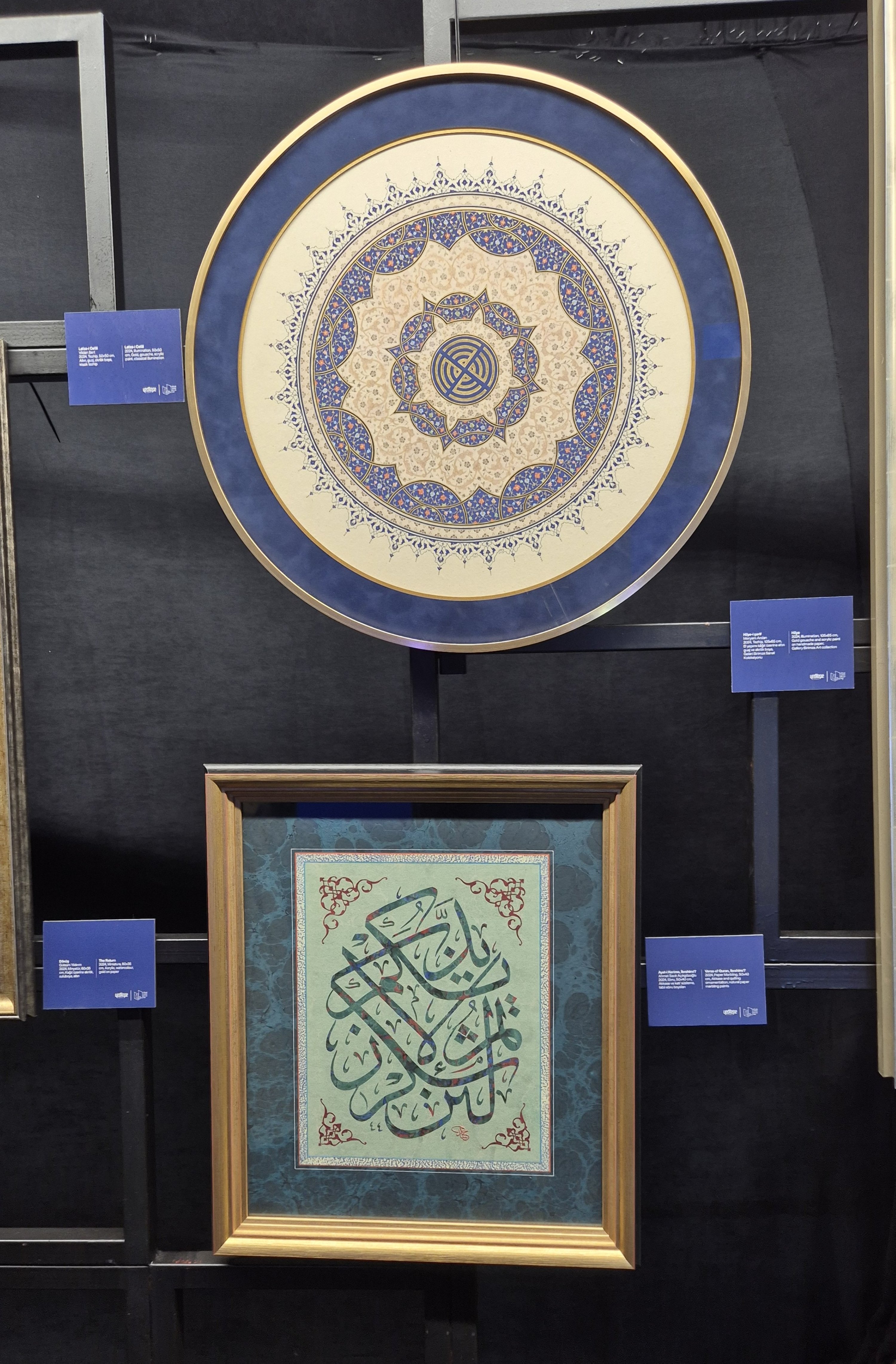
Strolling through the displays made clear that the idea of “Where There is Shadow, There must be Light” was not only a metaphor for the artwork on display but also one that infused the very core of the Biennale itself.
What really struck me was how modern artists reinterpreted traditional methods. Many of the works showcased new interpretations that were fresh and innovative, sometimes blending ancient techniques with contemporary sensibilities, while preserving the core of Turkish art. This combination of ancient and modern, tradition and creativity, was not only a celebration of Turkish culture but also a testament to art’s ability to evolve. The exhibition made clear that Turkish art is alive, thriving and growing, able to stand on its own in the global art scene.
It was absolutely amazing how contemporary artists adapted traditional methods. Many works preserved the core of Turkish art while offering fresh perspectives, often blending centuries-old methods with contemporary aesthetics. This fusion of tradition and innovation was both a tribute to cultural continuity and a testament to the transformative power of art. The exhibition affirmed that Turkish art is dynamic, evolving and confidently claiming its place on the global stage.
Events like the Yeditepe Biennale are significant because they can provide venues for discussion and contemplation. These exhibitions push us to consider how art influences our perspective of the world more than aesthetic delight. The Biennale’s creative curation and careful choice of sites created an ideal setting to enjoy art that both honors the past and looks forward to the future.
By the end of the night, I departed with a profound gratitude for the chance to witness this extraordinary integration of history, legacy and modernity. More than simply an exhibition, the Yeditepe Biennale was a cultural landmark that reminded us of the power of art to unite people, preserve heritage, and inspire the next generation.

